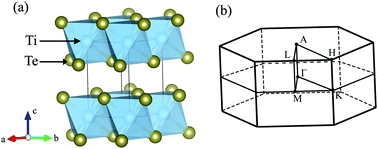Manipulating superconductivity of 1T-TiTe2 by high pressure
Abstract
Superconductivity of transition metal dichalcogenide 1T-TiTe2 under high pressure was investigated by first-principles calculations. Our results show that the superconductivity of 1T-TiTe2 exhibits very different behavior under hydrostatic and uniaxial pressure. The hydrostatic pressure is harmful to the superconductivity, while the uniaxial pressure is beneficial to the superconductivity. The superconducting transition temperature TC at ambient pressure is 0.73 K, and it reduces monotonously under the hydrostatic pressure to 0.32 K at 30 GPa, while TC increases dramatically under the uniaxial pressure along the c axis. The established TC of 6.34 K under the uniaxial pressure of 17 GPa, below which the structural stability is maintained, is above the liquid helium temperature of 4.2 K. The increase of the density of states at the Fermi level, the red-shift of the phonon density of states/Eliashberg spectral function F(ω)/α2F(ω), and the softening of the acoustic modes with pressure are considered as the main reasons that lead to the enhanced superconductivity under uniaxial pressure. In view of the previously predicted topological phase transitions of 1T-TiTe2 under the uniaxial pressure (Q. Zhang et al., Phys. Rev. B: Condens. Matter Mater. Phys., 2013, 88, 155317), we consider 1T-TiTe2 as a possible candidate in transition metal chalcogenides for exploring topological superconductivity.



 Please wait while we load your content...
Please wait while we load your content...